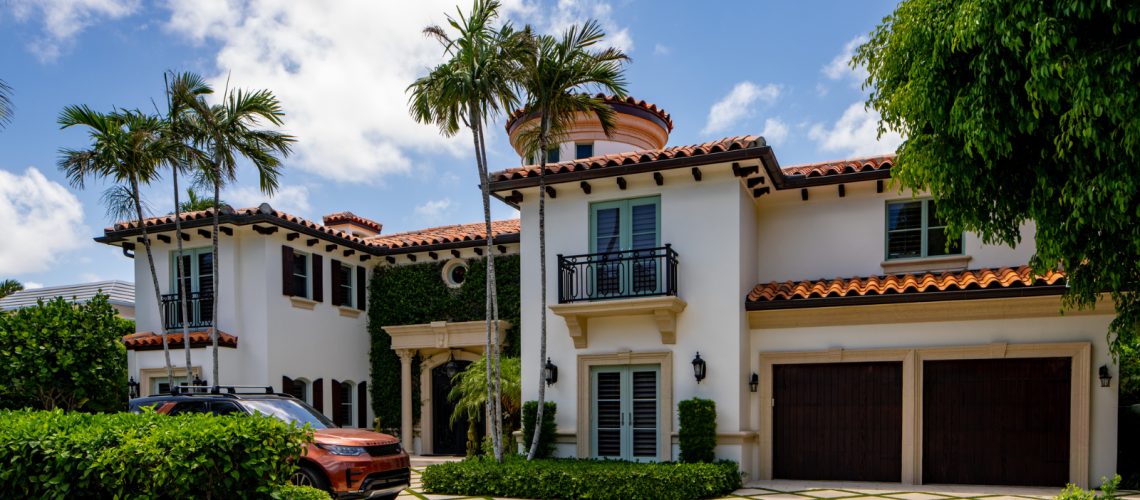The Best Plants for Hedging in Florida
Hedging is the act of using plants for privacy to protect and decorate your property. Hedges are also beautiful landscaping, providing a sense of privacy and security for your home, and they can be used as a barrier to keep unwanted pests out of your yard. Hedges are also easy to maintain, which makes them an excellent choice for first-time landscapers or those who want a low-maintenance space to spend time in. However, not all plants work to secure your property; hence you’ll need to research which plants are the best for hedging in your region.
How to Grow Hedges
You’ll want to choose a plant with a vast root system to grow a hedge. This will help the plant expand and fill in any gaps between itself and the surrounding landscape. Rows that form a solid barrier will need to be planted closer together than rows meant to be a screen. Hedges grow best in warm, moist conditions, so planting them in full sun is ideal. However, they can handle some shade, too. They’re very susceptible to frost, making them unsuitable for areas that tend to get frigid winters. The best place to grow a hedge is in an area that gets plenty of sun and is not prone to freezing temperatures.
The Best Plants for Hedging in Florida
If you’re looking for an attractive hedge that thrives in the heat or plants to use as hedges in Florida, the following are among the favorite.
- Bottlebrush. Most grow up to about 5 feet tall and nearly as wide. These sun-loving plants are known for their reddish and sometimes yellow or cream namesake ‘bottlebrush-like’ flowers.
- Clusia rosea. These drought and salt-tolerant Florida natives have thick, leathery leaves and grow up to 8-ft tall.
- Gardenia. Although they might require more maintenance than others on this list, many Florida gardeners find them worth the effort for their beautiful, fragrant flowers.
- Indian Hawthorne. Growing only 2.5-ft tall, these are a rugged, low-maintenance option for low hedges and feature showy spring flowers.
- Areca Palm. Growing 12-to-30 feet tall, these palms are a favorite for creating a tropical oasis feel. However, dying branches require constant removal to keep up appearances.
- Ixora. Another native, these sun-loving bushes with showy red year-round flowers will create a beautiful lower hedge with a splash of bright color.
- Cocoplum. Again a native, these ‘beachy’ looking bushes with their edible ‘plums’ require little attention and are therefore very common in Southwest Florida. Keep them trimmed low, or allow them to grow up to 15 feet tall.
Types of Hedges for Hedging in Florida
Florida’s landscape is filled with beautiful, lush plants, so choosing which types of plants you want to use as a hedge is easy. There are many different barriers to choose from, so you can find a hedge that suits your needs perfectly. Some of the most common types of hedges for Florida are privacy hedges, including the following:
Privacy Hedges: These hedges are often used around swimming pools to create a barrier between your property and the street or neighbor and keep people and objects outside the ‘fence.’ You can also choose plants based on their privacy requirements.
Barrier Hedges: They are used to protect gates or walls from damage. Barriers can also help block winds, storm winds, and birds flying over homes. You can choose plants based on which type of barrier you want to create, such as Currant, Oleander, and Tangle.
Wind Barriers: A wind barrier hedge will help shield your yard from strong winds, while a windbreak hedge will help direct the current to a different area.
Tropical Hedges: These barriers are commonly used to create a tropical feel in your landscape. Some tropical plants you can choose from include banana trees, pineapple plants, coconut palms, and bougainvillea. Also, you can prefer tropical flowers, such as Frangipani, hibiscus, and orchids.
Growing Tips for Hedges in Florida
When growing a hedge, you should keep a few things in mind. One of the most important things to remember when producing a hedge is that you want it to be a living barrier. If your hedge is dead and does not receive water, it will not grow. So make sure your hedge receives water and has a healthy, growing root system. This will ensure that it is an impenetrable barrier. You can do a few other things to ensure your hedge thrives.
- Mulch around the base of the plant to help retain moisture.
- Make sure that the hedge is pruned periodically.
- Maintain the barrier to ensure that it continues to grow.
How to Hedge Landscape Plants
The best plants for hedging usually have strong vertical growth and thick low-branching growing pattern. Bushy hedging plants will usually be able to intercept the wind that may damage your landscape and block people’s line of sight for privacy.
Some of the best landscape plants for hedging in Southwest Florida can be spotted repeatedly when driving around the area. Simply describing any you like to your landscape professional will probably be enough for them to know what it is. They will also be able to source and install it for you with the correct spacing.
Conclusion
If you are looking to protect your property or garden in Florida, you may want to consider planting a hedge. Hedges are an excellent way to protect your property from the elements (or prying eyes) and make your home or garden look more appealing. The best plants to hedge in Florida vary depending on the type of hedge you want. There are broad-leaved plants perfect for creating privacy when you need it the most. Shrub forms are best for protecting your property from strong winds. Evergreen plants are also suitable for creating a hedge that lasts for several years.


